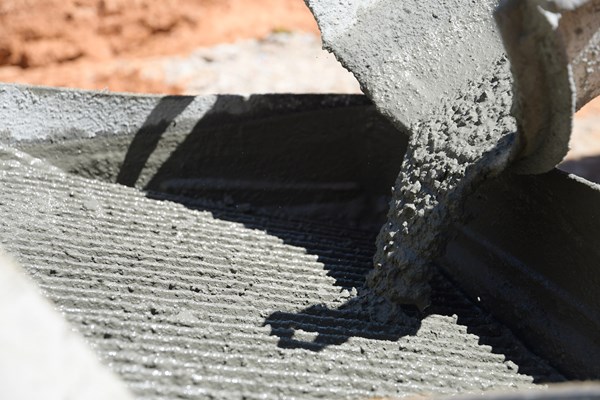
Concrete has been around since the days of the ancient Romans and Greeks. The Colosseum and Pantheon in Rome are testaments to the material’s durability, versatility, and strength. It is hard to think of any building that doesn’t have concrete as part of the foundation, walls, or floors.
While concrete has always been a primary material on job sites, its popularity poses a problem for those advocates seeking greener construction methods and building products to reduce the impact on the environment. We at Cleveland Construction support innovations that will make this age-old product more sustainable.
So.. “what’s the problem with concrete,” you ask?
Cement Production Creates Great Amounts of CO2 Emissions
The problem with concrete is that its production results in tremendous amounts of carbon dioxide (CO2) emissions. Cement, the binder that is mixed with aggregate and water to form concrete, accounts for approximately 7% of all man-made CO2 emissions annually. According to the U.S. Geological Survey, global cement production was responsible for an estimated 4 billion pounds of this gas being emitted into the atmosphere in 2017 alone.
Reducing CO2 emissions is one way to make concrete greener. A Canadian company, CarbonCure, has developed a scalable technology that can be used to inject this harmful greenhouse gas back into the production of ready-mix concrete. The technology is designed to improve the compressive strength of the concrete while reducing the carbon footprint and environmental impact of the material manufacturing process.
Other innovative approaches to making concrete greener include:
Graphene-Infused Concrete is More Durable and Twice as Strong
Researchers at the University of Exeter in the United Kingdom. have developed a new form of concrete that incorporates microscopic flakes of graphene, a form of carbon composed of a single layer of atoms assembled in a hexagonal lattice. Graphene is 200 times stronger than steel. The material is extremely lightweight and flexible, and features high heat and electronical conductivity properties. Walls and floors constructed from graphene-infused concrete could be thinner, thereby using less concrete and resulting in reduced CO2 emissions. As a bonus, scientists say this concrete is more resistant to water infiltration and more elastic than ordinary concrete, making it suitable for both earthquake- and flood-prone areas.
Fibrous Root Vegetables Are Being Used to Develop Denser and Stronger Cement As graphene is an expensive additive, other scientists are exploring root vegetables as alternative additives for concrete. For example, research teams are combining the fibers of carrots and beets to produce concrete mixtures with increased amounts of silicate hydrate, which improves the material’s mechanical properties. The goal is to use these waste materials from root vegetables, instead of the more expensive graphene, to achieve the increased strength.
New Uses for Coal Fly Ash Could Replace Cement Portland Cement Altogether
One of the byproducts of coal-fired electric generation is fly ash. Researchers are excited about a new use for this waste product that previously ended up in landfills. When combined with sodium silicate and calcium oxide, fly ash can become a permeable inorganic polymer, a strong binder that can replace concrete. It is particularly applicable to parking lots and streets since its porous characteristics allow water to pass through it. This allows replenishing of groundwater while reducing stormwater runoff and associated flooding.
Today, there are many new companies that are introducing innovative and exciting ways to create sustainable construction materials. We can help you look for these creative methods to meet your sustainability goals for the construction of your next facility. Hire Cleveland Construction to manage your next construction project. Click here to introduce yourself to our preconstruction team.